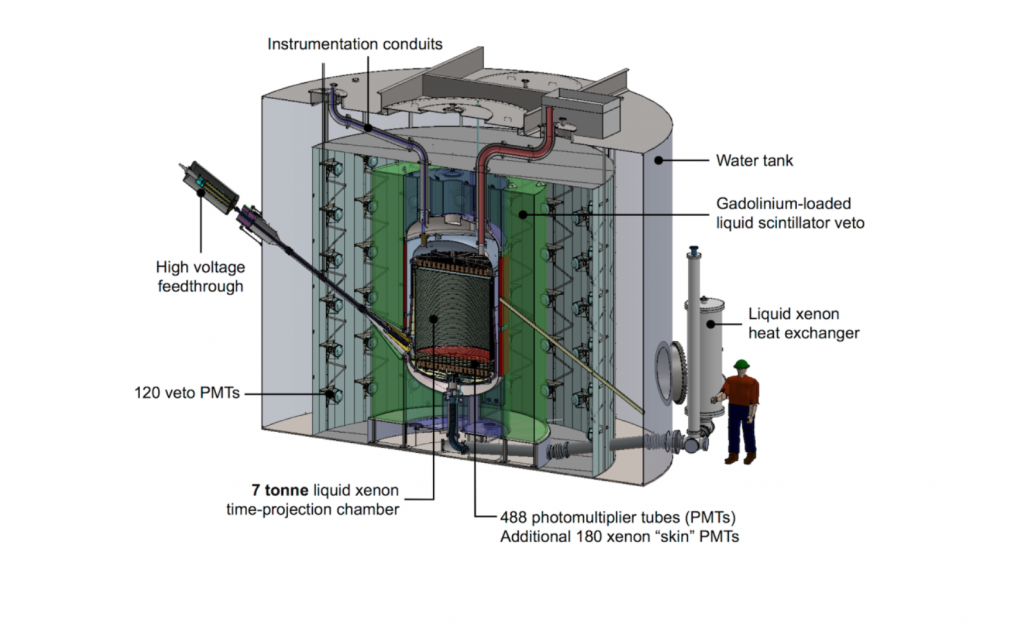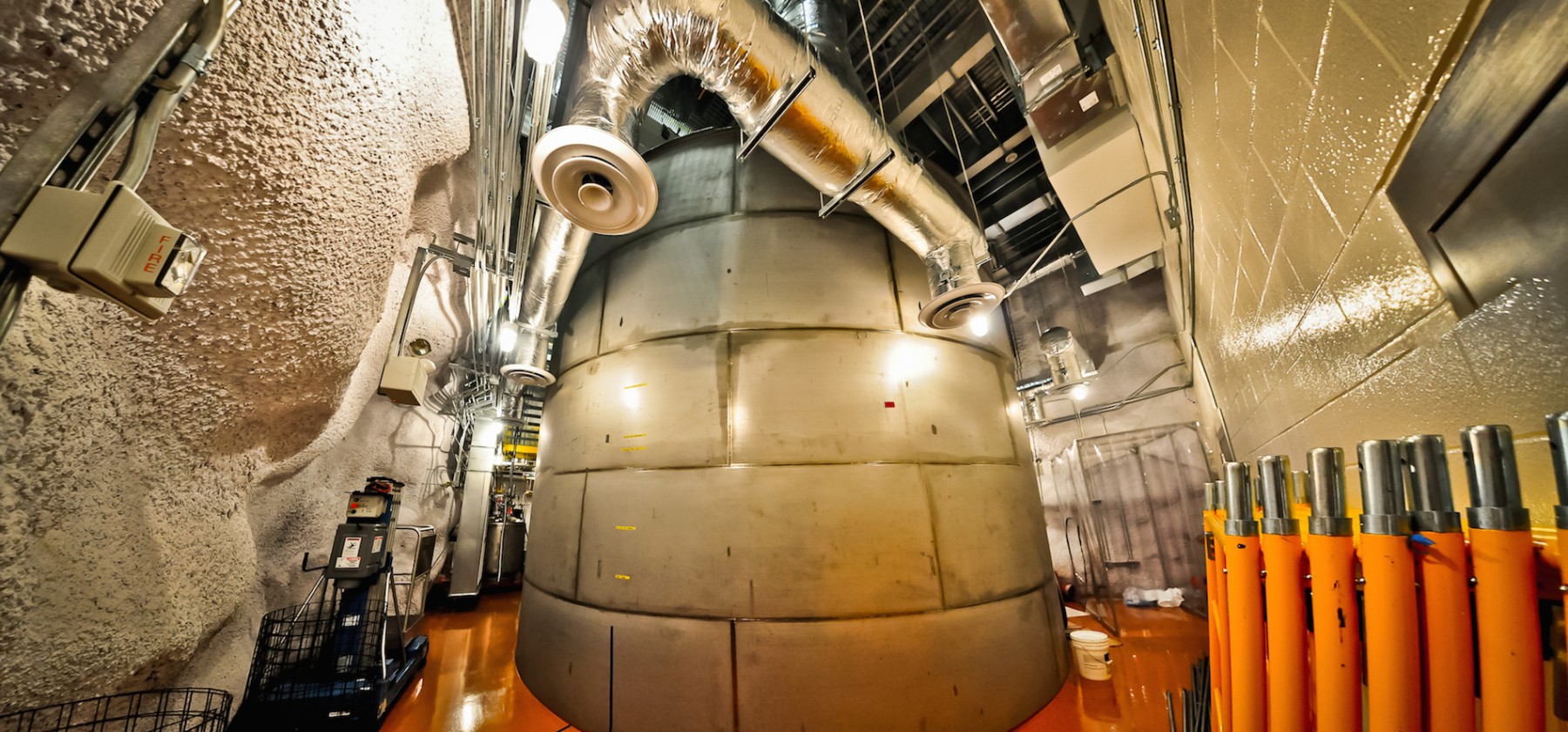Megan Stark ’13: On the Hunt for Dark Matter
 Early this year Megan Stark ’13 started a job on a dark matter research team. The LUX-Zeplin (LZ) experiment is a next generation dark matter direct detector. It is a study designed to detect faint subatomic interactions between different types of matter. It operates at the Sanford Underground Research Facility in Lead, South Dakota, located deep in the former Homestake gold mine where several laboratories sit nearly a mile underground.
Early this year Megan Stark ’13 started a job on a dark matter research team. The LUX-Zeplin (LZ) experiment is a next generation dark matter direct detector. It is a study designed to detect faint subatomic interactions between different types of matter. It operates at the Sanford Underground Research Facility in Lead, South Dakota, located deep in the former Homestake gold mine where several laboratories sit nearly a mile underground.
LUX is how physicists refer to the Liquid Underground Xenon Detector nestled in the Sanford Underground Lab. The research that takes place there was merged in 2014 with a research project in England known as Zeplin (ZonEd Proportional scintillation in Liquid Noble gases)—also housed in a former mine, now called the Boulby Underground Laboratory. Though still in its early phases, the merging of the two experiments has paved the way for what will be one of the biggest collections to date of data on dark matter.
If you’re not a physics guru you may be asking yourself by now, “But what is dark matter?” It isn’t like regular matter from our solar system and neighboring galaxies. In fact, it’s somewhat of a mystery in contemporary astrophysics. Although dark matter is widely accepted by the scientific community as the substance that accounts for 85 percent of the entire universe, the human eye has not yet observed dark matter on Earth. Astrophysicists postulate that dark matter consists of an unknown particle structure, and believe it exists somewhere in the vast uncharted expanses of the universe. This is where the hunt for dark matter deep underground starts its journey, and where Megan starts her career.
The detector in the LZ facility is designed to recognize weakly interacting massive particles (WIMPs), which are what researchers suspect dark matter consists of—particles with at least some mass that interact with everyday matter. The process of attempting to find dark matter requires that all lab materials are as pure as can be, in order to know that interaction detected is due to a WIMP passing through the detector rather than a radioactive decay within the materials used to build the detector. Megan is responsible for this part of the experiment. One reason that LZ has to be a mile underground is to block cosmic rays from the atmosphere that might be falsely read by the detector as WIMPs. Part of her job includes accounting for factors such as this.

The 7 tonne liquid xenon time-projection chamber makes up the heart of the detector, where scientists monitor WIMPs. Surrounding parts and water tank (pictured above) veto false WIMP events.
“Because dark matter does not interact with ‘real’ or ‘known’ matter in any way other than through the weak force, it is extremely difficult to detect, and is therefore called a ‘rare event search,’” she says. “In the LZ detector, WIMPs are expected to pass through the detector—essentially, hitting a liquid xenon nuclei—and the detector will then be able to detect this event, look at the energy change and say either ‘Yes, that was a WIMP,’ or ‘No, that was something else.’” Since the objective is to find a particular nuclear interaction it is imperative that nothing is intruding in the background or emanating radiation, like radon, for instance—“it decays into other materials that then become problematic.”
Megan landed on the physics scene at Gordon after switching over from social work after her sophomore year. She was a member of the Swim Team for her first two years, an outreach intern her junior year, and worked for Gordon’s catering services for all four years. “Everything in terms of physics in my life, from switching my major, to where I work—everything—is God’s hand, because none of it is something that I would have chosen for myself,” she says. She also credits her success to Dr. David Lee, chair of the Physics Department, who advised her through her last two years and pushed her to achieve more than she thought possible. She is grateful for the faith he‘s had in her. “I really owe a lot of where I am to Dr. Lee and the fact that he never let me quit, even when I was certain that it was the best thing for me,” she said. He always knew physics would be her path—even if that path led her a mile into the Earth.
Like many Gordon grads, Megan suspected that she might find herself jumping into graduate studies within a year of graduation. “That year has turned into several years now, but this time has been really good for me,” says Megan. Since hopping aboard LZ last year, Megan has found stability in life and is able to see her family in Colorado more often; she’s also enjoying hiking in the Black Hills. “After living in Massachusetts for so long, it is nice to be only a six hour drive from my family,” she says. “South Dakota took some adjusting. It is so different, but it is really starting to grow on me.”
By Jimmy Sicord ’16, Communication Arts
Top photo and diagram courtesy of The LZ Dark Matter Experiment.
 The Bell
The Bell